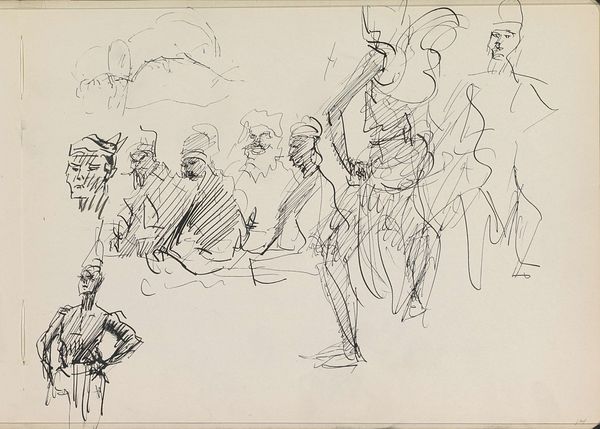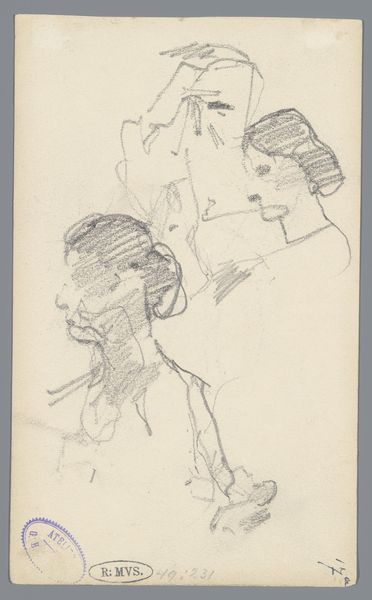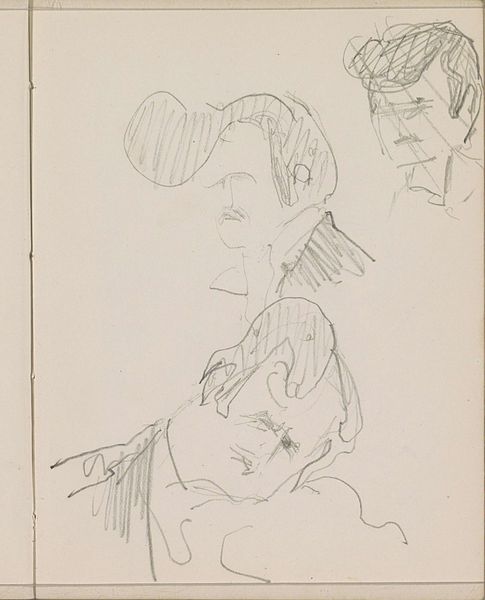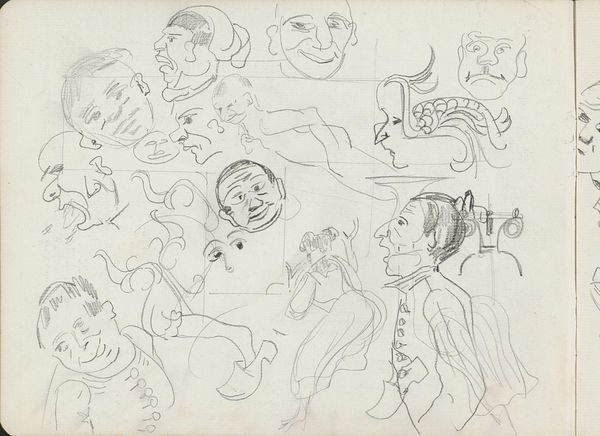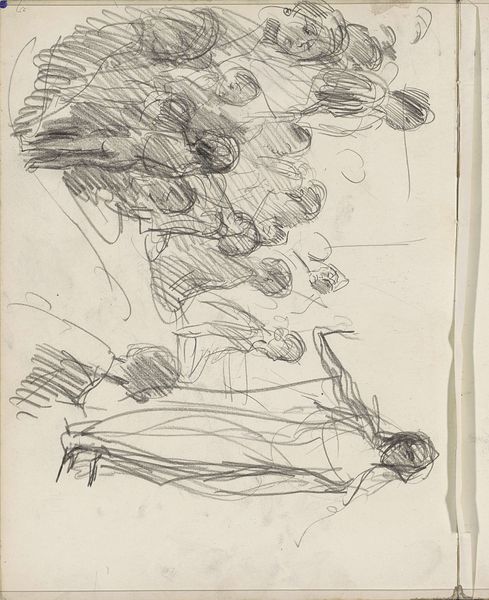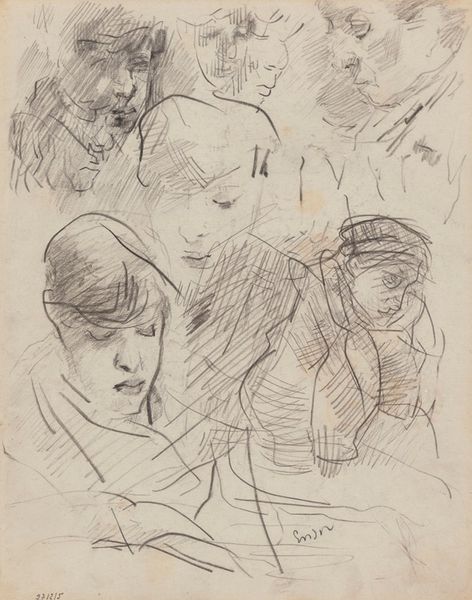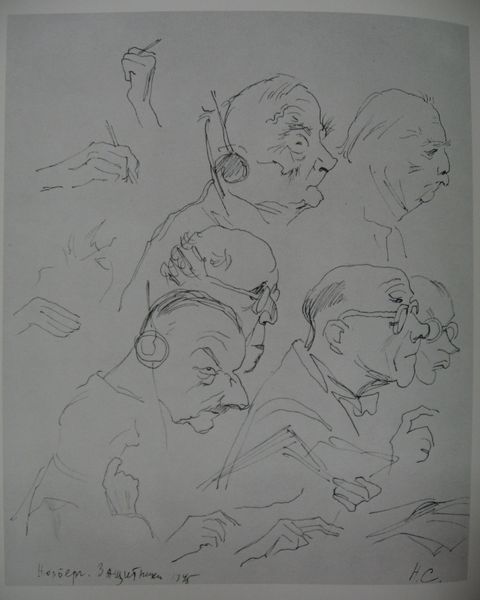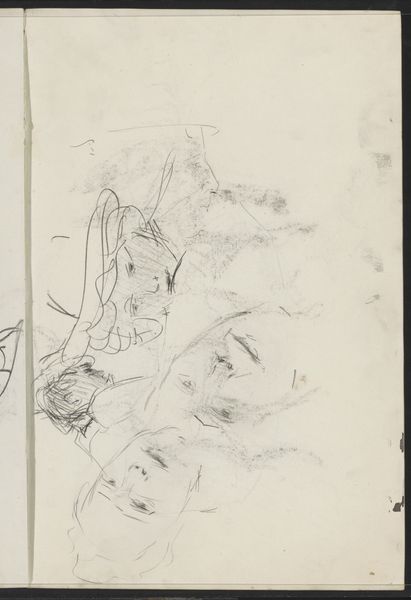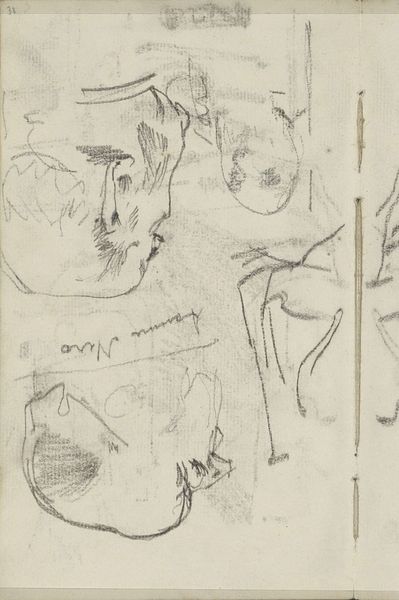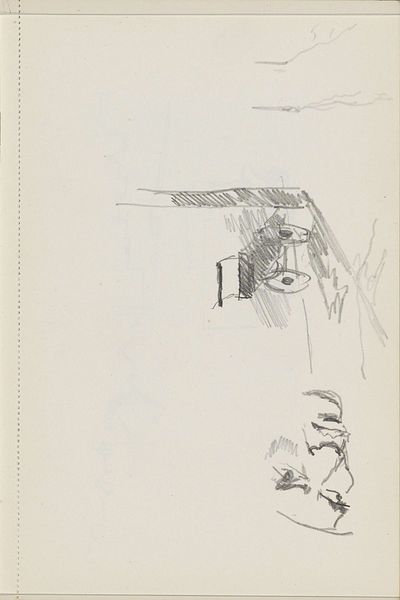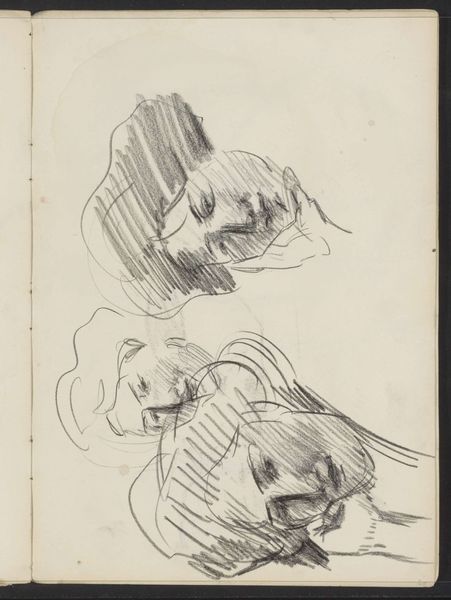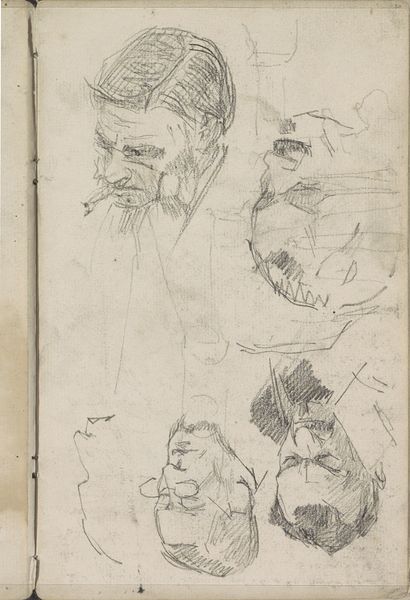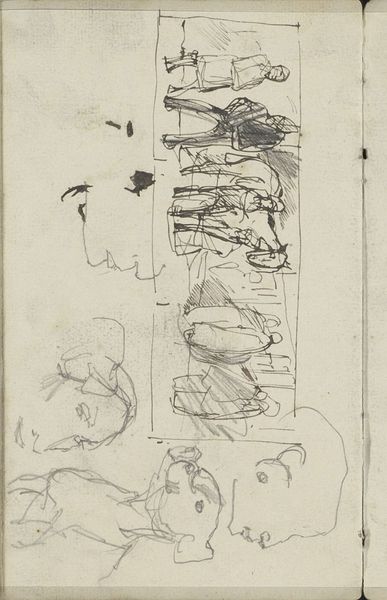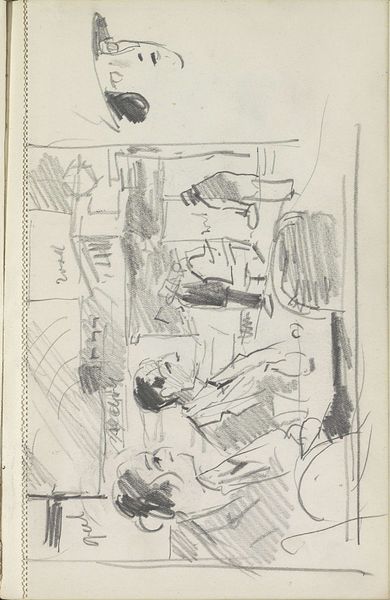
drawing, paper, ink, pencil
#
portrait
#
drawing
#
comic strip sketch
#
imaginative character sketch
#
self-portrait
#
pen sketch
#
figuration
#
paper
#
personal sketchbook
#
ink
#
idea generation sketch
#
ink drawing experimentation
#
pen-ink sketch
#
pencil
#
sketchbook drawing
#
storyboard and sketchbook work
#
academic-art
#
sketchbook art
Copyright: Rijks Museum: Open Domain
Curator: Carel Adolph Lion Cachet's "Figuurstudies," created around 1930, is a captivating sketchbook page now held here at the Rijksmuseum. It's a flurry of faces, isn't it? Editor: Indeed! My immediate impression is one of quiet introspection, a fleeting glimpse into the artist's private world of musings, despite the chaos of lines. There's a palpable sense of searching. Curator: A very astute observation. Note the composition, the dynamic interplay of hatched lines forming shapes. The repetition of facial features is an excellent example of the academic-art practice and demonstrates a formal analysis of human physiognomy. How do these shapes speak to you? Editor: Well, to me, the repeated images create a sense of dreamlike pondering, that they're psychological projections more than formal studies. The slight variations in each face, each tilting of the head or closing of the eye, feels like a man in deep thought—maybe self portraits, wrestling with an idea. Curator: Perhaps. Or possibly a set of trial iterations to capture one particular idea. The artist returns and adjusts different parts to create different effects, each line impacting the form. But consider the broader visual language: the contrast between the sparse, delicate lines of some faces and the denser, more labored shading of others. This adds to a textural dimension that you're seeing as different projections, right? Editor: It certainly reinforces it. Look at the top faces against the portraits at the bottom. It suggests the fleeting, almost ghostly, nature of memory. Those are potent visual shorthands. Are these actual studies of models? Curator: It is hard to be completely certain; it could be imagination. What Cachet does so brilliantly is play with spatial depth, manipulating our perception. The varying line weights create this push and pull across the picture plane. Editor: That manipulation is emotionally charged for me. They are sketches on a theme more than objective portrayals. The eyes on the leftmost figures at the top, and the central face remind me of icons. It gives an otherworldly touch. Curator: In total agreement. Ultimately, "Figuurstudies" succeeds as a glimpse into the creative mind—it reveals form, sure, but allows feeling to saturate the work, don't you think? Editor: Precisely. And that is why it resonates with its viewers, whether in the realm of feeling or in an exploration of its line and weight. Thank you for showing me "Figuurstudies" in new light.
Comments
No comments
Be the first to comment and join the conversation on the ultimate creative platform.
